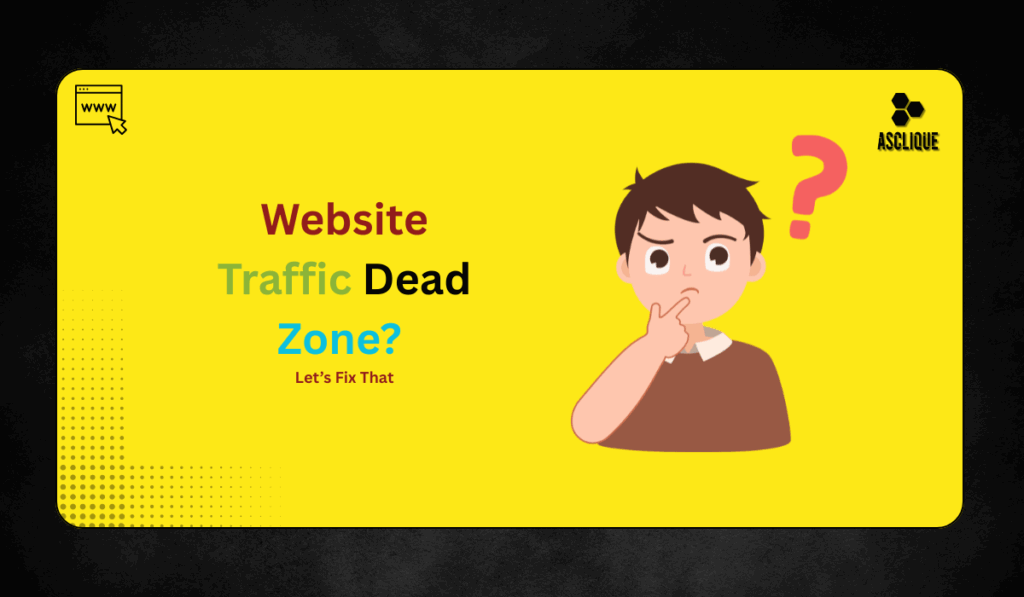Write Blogs That Solve Problems
Blogging remains one of the most effective strategies for those wondering how to increase website traffic, but success depends on delivering real value. Avoid writing just to fill space; instead, target topics your audience is genuinely searching for. Use tools like Google Keyword Planner or Ubersuggest to identify high-volume, low-competition keywords, and craft blog posts that address real questions and provide useful solutions.
Produce content that:
Teaches and solves real issues
- Uses straightforward headings, short paragraphs, and simple language
- Has illustrations, lists, and images to keep readers engaged
Also, connect with industry experts or thought leaders. Quoting them or referring to their name may make them share your blog—showing increased traffic from their audience.
In conclusion, a well-researched and well-written blog can drive long-term, sustained traffic to your website.
Use Internal Links for Better Navigation
Internal links are links between one webpage on your site to another page on your site. They are important for both user experience and search engine optimization (SEO).
- Internal linking, done correctly, benefits by:
- Directing visitors to related content so they stay on your site longer
- Informing search engines of the relationships between your pages
- Shifting authority (PageRank) from popular pages to pages you’d like to promote.
- Enhance your search ranking opportunity
Utilize Internal Links Smarts
The following is how to utilize internal links smartly:
Identify Your Top-Performing Pages: Look at your analytics and find out what the most visited blog posts or product pages are. These have more SEO strength. Utilize them to link to other important or new pages that you want to rank.
Link to Relevant Content: Add links only where they make sense. For example, if you’re writing a blog about “SEO tools,” link to your post about “Best free SEO tools” or your product page that offers one.
Use Descriptive Anchor Text: Don’t use generic phrases like “click here.” Instead, use descriptive keywords that match the content of the linked page. For example, write:
“Learn more about our SEO checklist for small businesses.”
Update and Submit Your Sitemap: Once you add new pages and links, submit your new sitemap to Google Search Console. This makes Google crawl your content faster and better understand your site.
Include Breadcrumb Navigation: Breadcrumbs are those small navigation links at the top of the page, like:
Home > Blog > SEO Tips
They improve user navigation and establish automatic internal links, so it’s simpler for Google and users to understand your site structure.
Optimize Title Tags for Clicks
Your title tag is the first piece of information users see when your page appears in Google search results. Think of it as your headline—and it can be the make-or-break factor in how to increase website traffic.
A well-crafted title tag tells both users and search engines what your page is about. If it’s clear, relevant, and attention-grabbing, it can significantly improve your click-through rate (CTR) and attract more visitors to your site.
How to Write Effective Title Tags:
- Keep it under 55 characters
- Short titles avoid being truncated in search results. Make each word count.
- Include your main keyword
- This informs Google about the subject and increases your ranking chances.
- Match the user’s search intent
- Think about what the user is looking for and make your title reflect that.
- Create distinctive titles for each page
- Avoid duplicate titles—each page must have its own different subject matter.
- Use sentence or title case consistently
- Choose one approach (e.g., “How to Start a Blog” or “How to start a blog”) and stick to it throughout your site.
Make Engaging Meta Descriptions
Meta descriptions are brief descriptions that appear underneath your title tag in search engine results. They don’t affect rankings per se, but a well-crafted and appealing meta description will persuade users to click on your link. This enhances your click-through rate (CTR) and sends additional traffic to your website.
The best ways to write great meta descriptions:
- Keep it below 145 characters
- Include your target keyword
- Keep it simple sentence case
- Highlight key benefits or features
- Ensure that it adequately summarizes the page
- Meta descriptions don’t directly influence rankings but do influence user behavior, which does.
Create Focused Landing Pages
Landing pages are designed to take users to a certain action, whether it is buying something, subscribing, or downloading an asset.
Create each landing page with a clear intention. Personalize it according to your analytics—like what products your visitors look at most.
Here’s what the high-converting landing page must include:
- A strong headline
- Concise and clear copy
- One call-to-action (CTA)
- Visual components (images, videos, icons)
- Social proof (reviews, testimonials)
Obtain Quality Backlinks
Backlinks are links from other websites that lead to your own, acting like endorsements in the eyes of Google. The more high-quality backlinks you have, the more trustworthy and authoritative your site appears. This helps improve your search engine rankings and brings in referral traffic from other sites.
But don’t forget—quality is more important than quantity.
How to get backlinks:
- Guest blog for authoritative sites
- Name experts or brands and inform them
- Partner with bloggers to review your work
- Spin off an affiliate program
- Be quoted in news articles or PR announcements
A backlink from a high-authority source can drive traffic and boost your domain authority.
Leverage the Power of Video
Video content is compelling, easy to understand, and strongly shared, creating a powerful influence a lot of people. Platforms like YouTube, having more than a billion users, give your brand tremendous exposure. By creating informative or engaging videos, you can channel traffic and establish credibility with your viewers.
Types of videos that work:
- How-to videos: Show something helpful and market your product.
- Brand storytelling: Tell your purpose or customer success story.
- Fun or timely content: Make the audience laugh, keep up with trends, or entertain them.
- Add a website link to the video description and throughout the content with CTAs.
Leverage Social Media Effectively
When properly used strategically, social media can drive consistent traffic to your site. Share useful content that responds to questions or creates interest, and always leave a clear path—a link—to your site. Relevance and consistency help convert followers into visitors and potential customers.
Successful tactics are:
- Post blog posts and link them to landing pages
- Use Instagram for visual content and LinkedIn for B2B updates
- Announce promotions or events with links to special pages
- Be regular with posting and tone
- Use hashtags and engage with followers
- Don’t sell—participate, teach, and welcome.
Engage Reddit Communities
Reddit subreddits are devoted to certain areas of interest, which makes Reddit a great resource for getting to the niche audience. By genuinely engaging with relevant communities and sharing helpful information, you can gain credibility. Properly done, it can lead to highly targeted and top-notch traffic on your site.
How to use Reddit for you:
- Get subreddits related to your product or category
- Post personal anecdotes or advice, not sales pitches
- Link to helpful blog posts or tools on your site
- Be sure to follow subreddit rules to avoid spam flags
- Subreddits like /r/smallbusiness or /r/marketing are great for marketers and business owners.
Set up a presence on Instagram
Instagram’s not only a nice-looking platform—it’s a phenomenal relationship-building tool. By posting interesting content, behind-the-scenes tales, and product features, you can build trust and loyalty. With links in your bio or Stories, you can even drive consistent traffic to your website.
Here’s how:
- Find and engage with influencers and everyday users in your space
- Post behind-the-scenes content and personal experiences
- Create Reels to promote offers or feature products
- Use story highlights to lead to offers or FAQs
- Host contests that encourage users to visit your site
- Be genuine. Highlight relationship building.
Launch a Niche Podcast
Podcasts help build trust and credibility because you’re directly speaking to your audience. While you can’t place clickable links in audio, traffic can be driven by mentioning your site within episodes. Put links in show notes or turn episodes into blog posts to further maximize exposure and traffic.
Here’s how:
- Post transcripts and episode summaries on your blog
- Put relevant links in your show notes
- Refer to your website and resources organically within the episode
- Create supporting blog posts with additional depth
- A dedicated listener will be a dedicated visitor and customer.
Take advantage of User-Generated Content (UGC)
User-Generated Content (UGC) includes customer reviews, testimonials, social media posts, or videos. It makes consumers believe in your site because they prefer actual users to promotional content. UGC also triggers community involvement and gives your brand authenticity. Sharing it can attract new customers and consolidate loyalty.
Benefits of UGC:
- Encourages interaction
- Operates as no-cost content
- Boosts credibility
- Triggers referral traffic
- Encourage your customers to hashtag your company, use a branded hashtag, and share their experiences.
Play with Email Marketing Campaigns
Email marketing is a powerful and cost-effective way to explore how to increase website traffic by reaching your audience directly in their inbox. Unlike social media, you’re not at the mercy of algorithms—your message goes straight to the reader. It’s perfect for sharing updates, promotions, or new content, and with personalized, consistent emails, you can boost engagement and drive more visits to your website.
Effective forms of email are:
- Newsletters with informational content
- Product releases
- Sale offers or discounts
- “Recommended for you” emails
Personalize it. Use customer names, keep recommendations tailored, and always offer a definite link to your site.
Advertise with Google Ads
Google Ads allows you to showcase your website to users exactly when they’re searching for what you offer. It’s a fast and highly targeted method in your strategy for how to increase website traffic. By selecting the right keywords and ad formats, you can reach the right audience at the perfect moment. When managed well, Google Ads delivers immediate and measurable traffic results.
Google Ads options:
Search ads: Show when users search your keywords
Display ads: Visual banners on websites in the Google Display Network
Shopping ads: Show product images and prices in search results
Video ads: Promote your brand on YouTube
Start with a small budget, test different ad variations, and track performance to optimize your strategy.
Final Thoughts
Getting traffic to your site isn’t a single magic trick—how to increase website traffic is really about using several proven tactics together.
From writing value-packed blogs and building quality backlinks to running Google Ads and engaging on platforms like Reddit, each step adds to your website’s long-term growth.
Start small—try a few of these strategies, monitor the results, and double down on what works best for your audience.
Your website deserves to be seen—now let’s put these methods into action and make it happen!
FAQ’s
My website isn’t getting traffic, regardless of constant posts.
Posting is just half the battle. Without promotion, keyword targeting, and SEO, your content won’t even see the audience.
How long does it take to see the results from SEO?
Usually 3–6 months. SEO is slow but a long-term traffic champion if you stick with it and are strategic.
Do I need to be on every social network?
No. Focus on 1–2 platforms where your target audience is most active and give your best there.
What kind of blog posts attract the most traffic?
Solution-oriented blogs such as how-tos, guides, and lists fare best, particularly with high SEO and concise value.
Are backlinks really necessary?
Yes! Good backlinks are essential when learning how to increase website traffic. They boost your site’s authority, improve search engine rankings, and bring in valuable referral traffic from other trusted websites.

